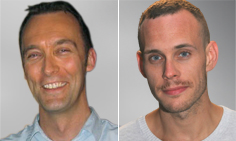TWENTY years ago, a human papillomavirus vaccine for young people to prevent genital warts and cancer was unimaginable.
Nor would we have imagined complicated treatments being replaced with tolerable, once daily treatments for HIV, and subsequently being used for pre- and postexposure prophylaxis.
However, something that is not as well celebrated is improved comfort with human sexuality and its various expressions in the Australian community.
It wasn’t just my (CB) inexperience in my early career which produced hostile reactions when asking my patients the gender of their sexual partners or what they “got up to” with them. I’m much better at getting this information now than I was in 1992, but both men and women today are unfazed by these questions.
A common retort from patients when I ask about same sex partners is “not yet”. It is a cause for celebration that my patients are open to this personal possibility and are comfortable with being asked questions about sex.
This suggests a shift in general community acceptance, (more) supportive schooling and social environments for young people including access to accurate information, and social and media role models of non-heterosexual relationships.
Clinical services in this area are also better than before.
Yet, despite these clear shifts in attitudes, gay, lesbian and bisexual people still have poorer health behaviour and outcomes than their heterosexual peers, with many of the differences originating from social exclusion and discrimination.
The list is long — drug and alcohol dependence, mental illness, sexual and drug risk-taking, sexually transmitted infections (STIs) including HIV, injecting drug use and interpersonal violence.
While general practice guidelines for preventive activities for young people include sexuality domains, few adult primary health assessment tools incorporate specific questions about sexuality despite the clear links to ill health.
STIs including HIV typically have no symptoms. So, unless a GP asks about sexual risk or a patient specifically requests testing for STIs or HIV, the opportunities for a discussion about sexuality may only arise during consultations about sexual function and contraception.
Although research has found that many GPs are nervous about bringing up sex with their patients, other work has also found that patients are interested in discussing their sexual lives with their doctors.
The Royal Australian College of General Practitioners recommends GPs offer routine annual STI/HIV testing, which not only helps detect STIs and HIV but also helps to start a sexual conversation with our patients to improve assessments of mental and drug health.
Patient management systems, which are well embedded within Australian primary care, are powerful tools for assisting doctors with assessment and to remind us and our patients to undertake preventive health screening.
However, they are only as good as the information that is entered. Unfortunately, popular Australian GP medical records systems have relegated sexuality indicators — often using outdated labels like homosexual/bisexual/heterosexual — to inaccessible places, which reinforces the stigma and marginalisation of this issue.
Our recent Australian study, which assessed how frequently sexual orientation was included in the health records of gay and bisexual men attending primary care for STI and HIV testing, revealed some of the challenges this presents. Even in practices popular with gay men in inner capital city locations, recording of sexual orientation for all men was suboptimal (64%) and was much poorer (18%) in practices in other locations.
Patients who had previous STI/HIV tests, who saw a female GP, and/or had visited the clinic multiple times were more likely to have their sexual orientation recorded.
While there may be legitimate reasons to not record sexual orientation details for some patients, such as privacy or sensitivity, not doing so fails to harness the power of health records to support patient health.
Part of our role as providers is to normalise health-related behaviours and find new ways to help our patients live healthy and happy lives. Talking about sex and including those details in a patient record is part of that normalisation that can also lead to better health outcomes overall.
Our patients are meeting partners online and revealing specific personal and sexual details to strangers, so it should be no surprise they are increasingly comfortable with and willing to discuss their sexuality and accept that this will be part of their health record.
Recording sexual orientation is one more way that we can help strengthen primary care of our patients.
Dr Chris Bourne is the head of the NSW STI Programs Unit and senior staff specialist at the Sydney Sexual Health Centre. Dr Denton Callander is a research fellow at the Kirby Institute, University of NSW.
Acknowledgements: Associate Professor Rebecca Guy, Kirby Institute, University of NSW.

 more_vert
more_vert